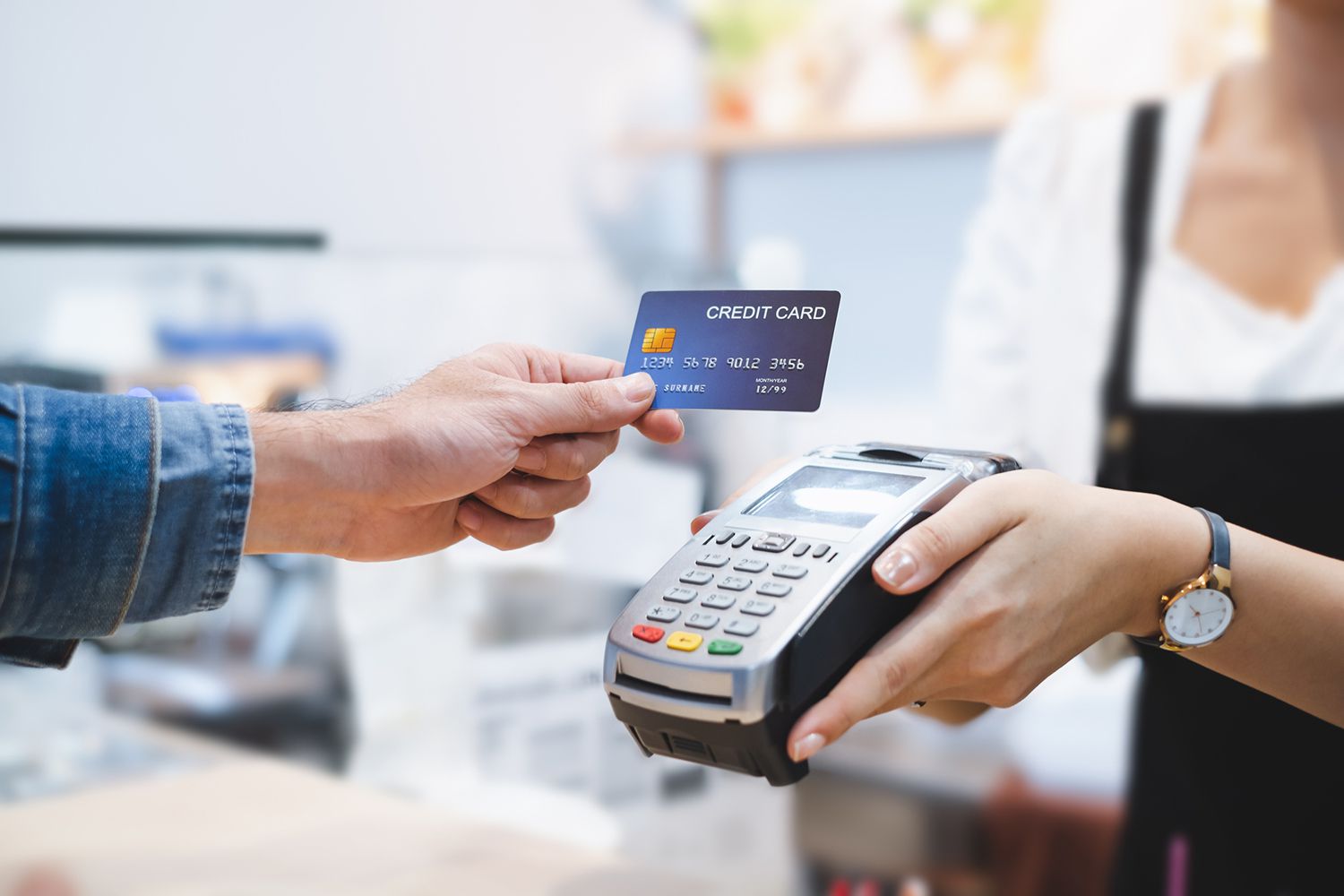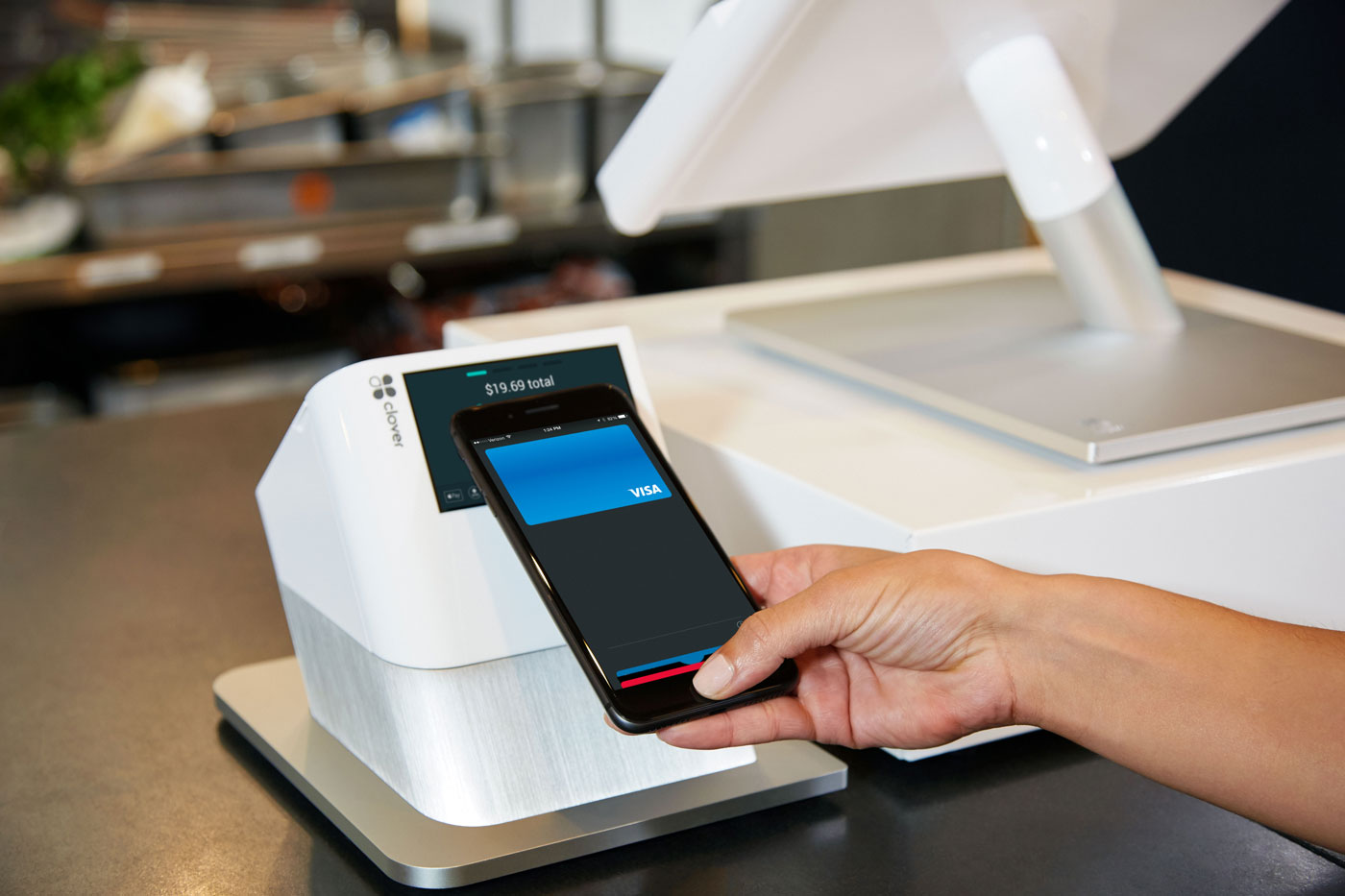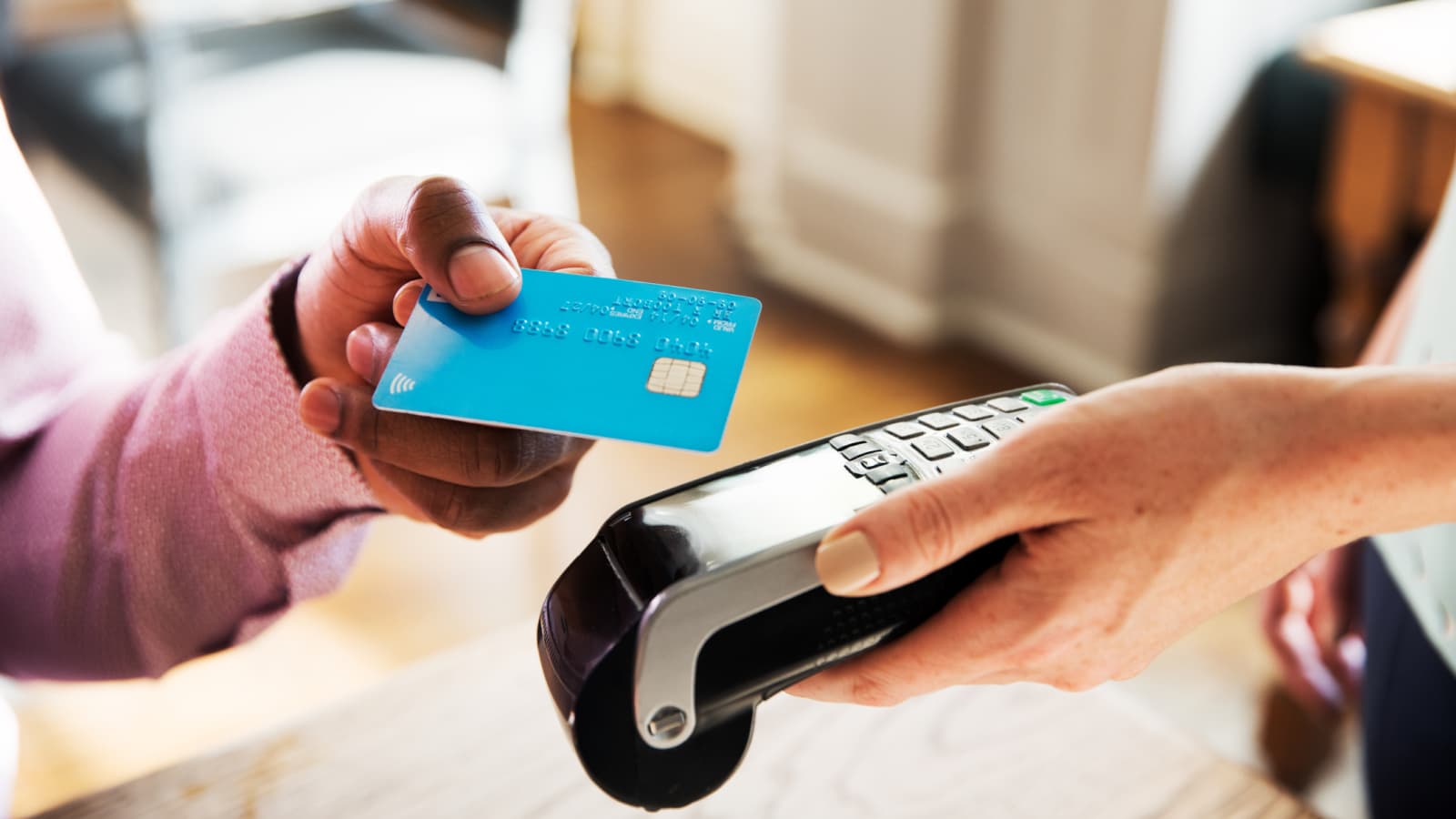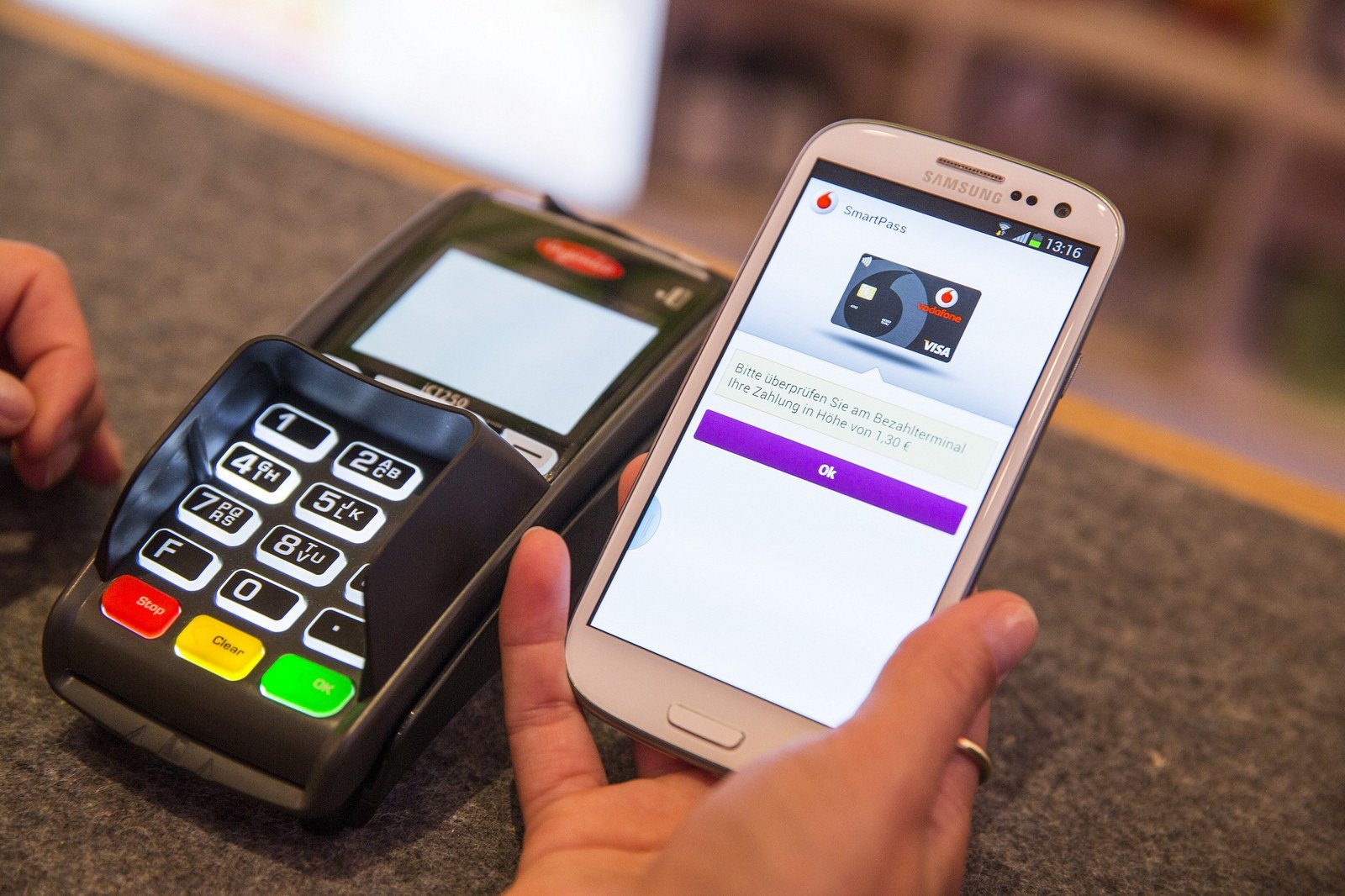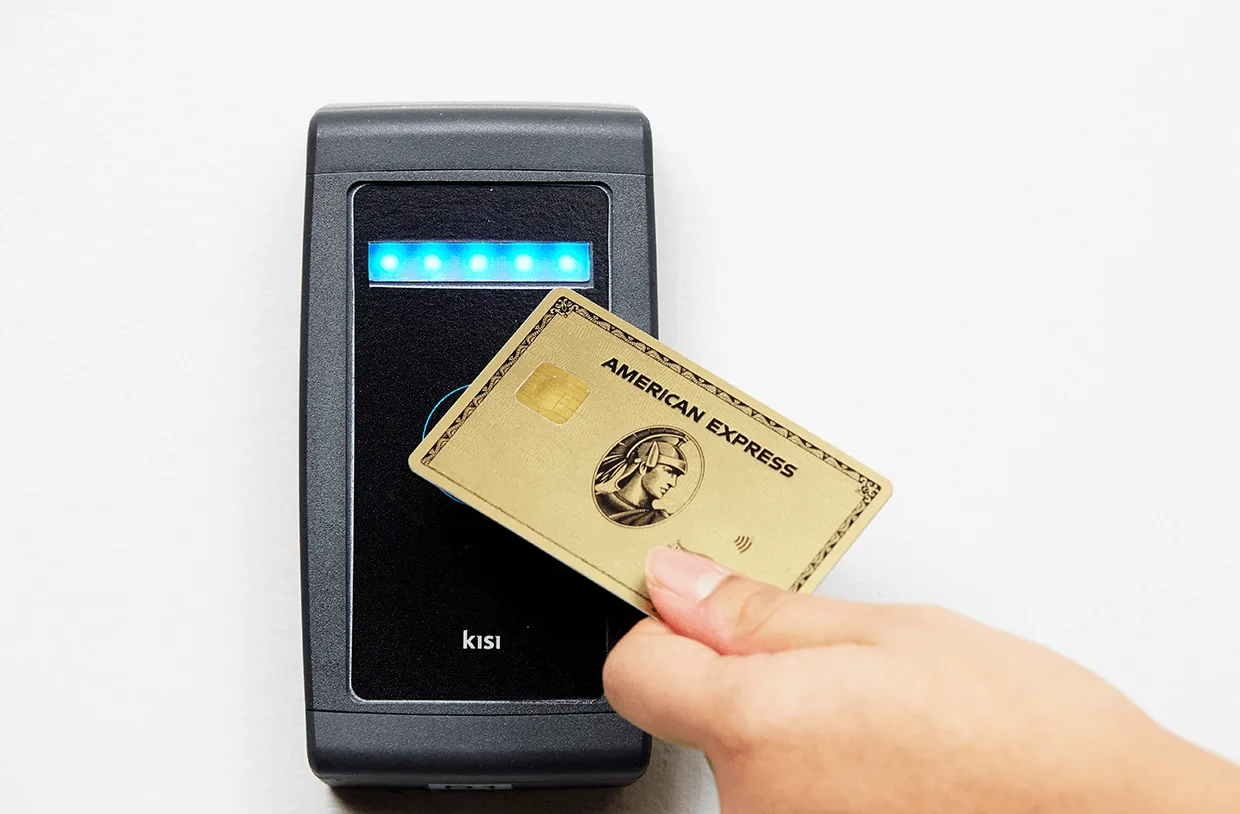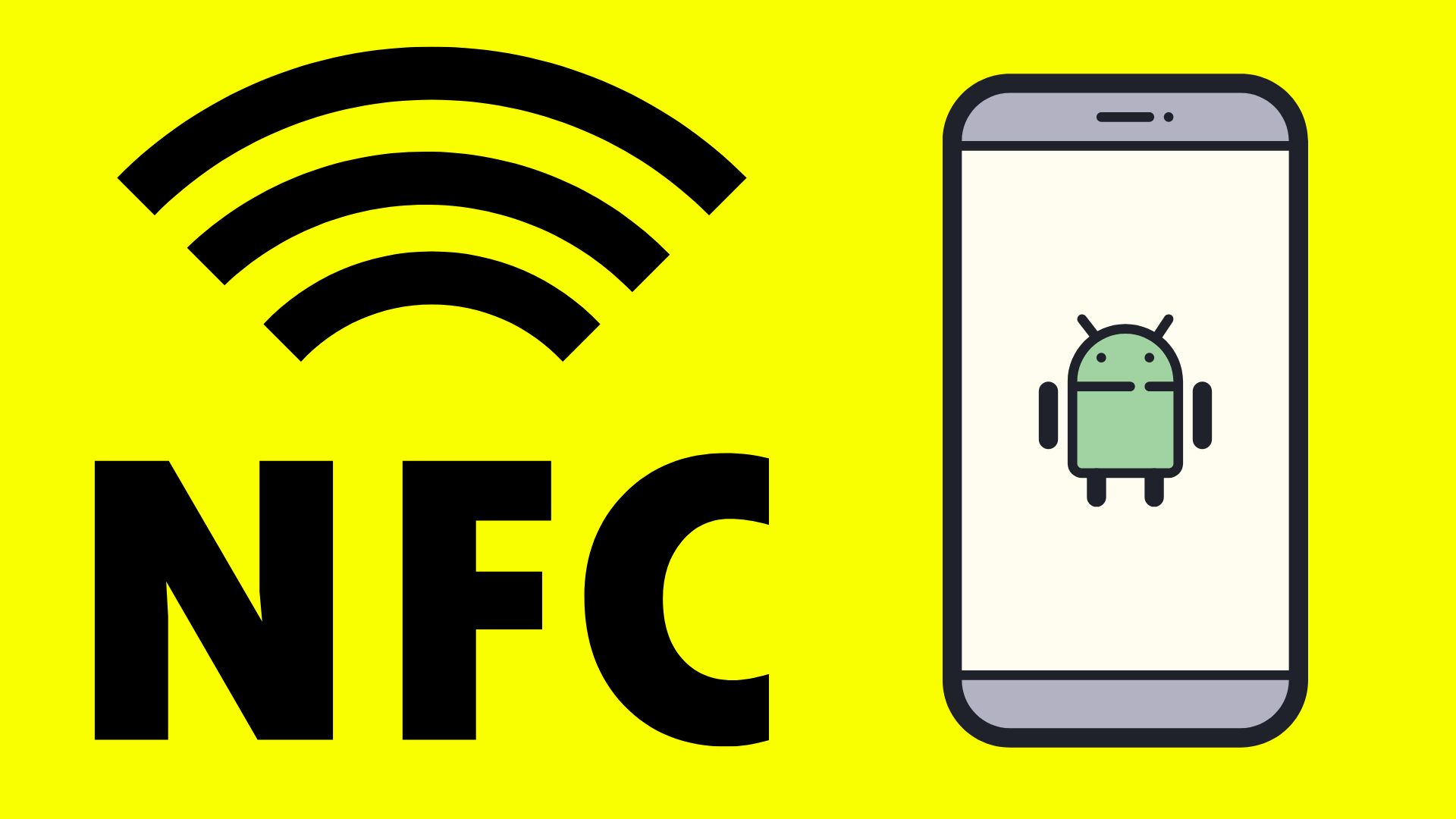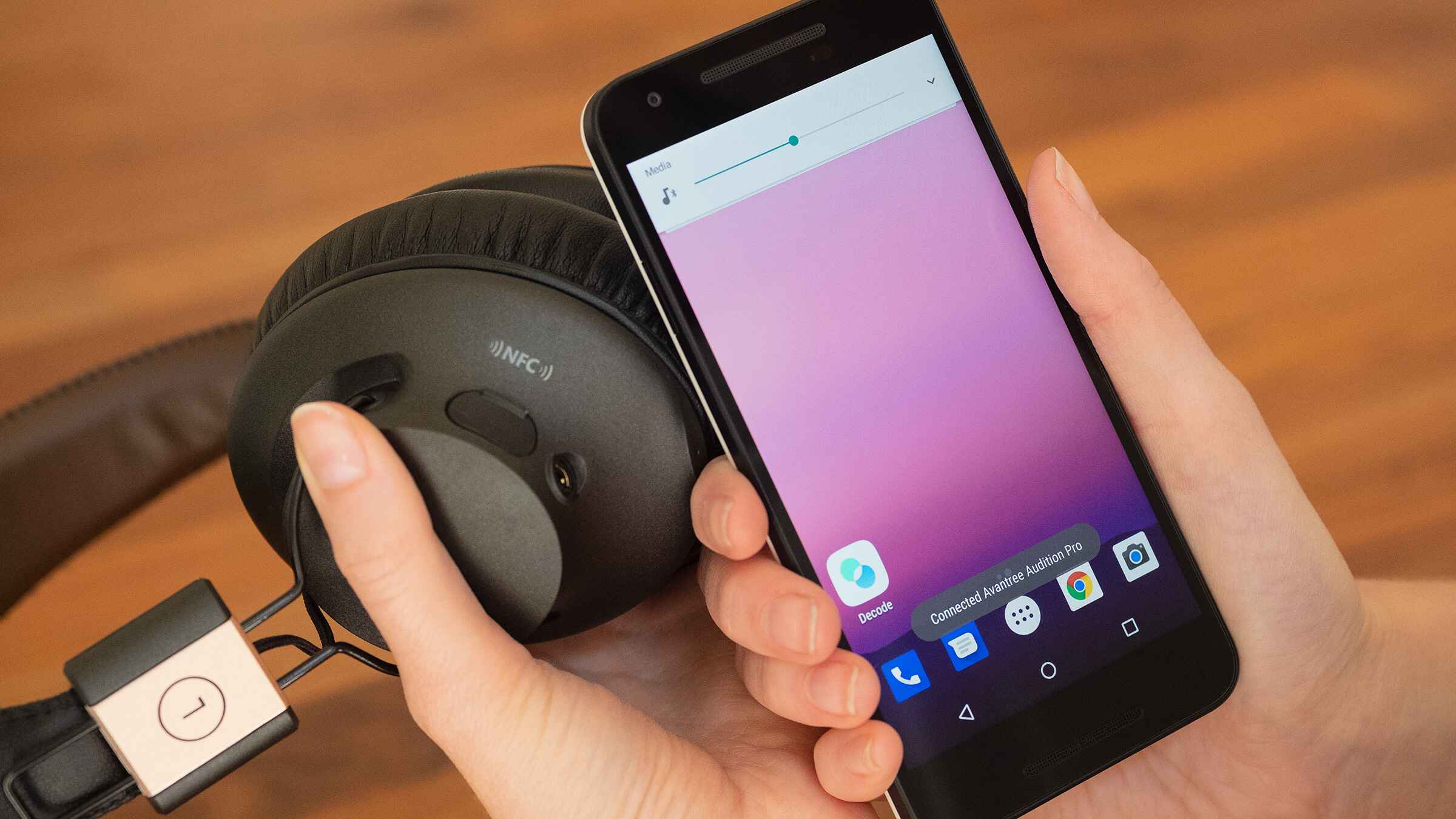Introduction
Welcome to the world of NFC and contactless payments! In today’s fast-paced digital era, these technologies have revolutionized the way we make transactions, offering us seamless and convenient methods to pay for goods and services. Whether you’ve heard the buzzword “NFC” or the term “contactless payments,” this article will provide you with a comprehensive understanding of what they mean and how they work.
NFC, short for Near Field Communication, is a wireless communication technology that allows devices to communicate with each other when placed in close proximity. It enables devices to transfer data and initiate transactions without the need for physical contact, making it highly convenient and efficient.
Contactless payments, on the other hand, refer to the ability to make secure transactions by simply tapping or waving a contactless-enabled card or mobile device near a payment terminal. Instead of having to insert a card or enter a PIN, this technology allows for quick and hassle-free transactions.
With the rise of smartphones and wearable devices, NFC and contactless payments have gained immense popularity. They have become widely adopted by businesses, retailers, and even public transport systems, offering users a faster and more convenient way to make payments on the go.
Throughout this article, we will delve deeper into the functionalities, advantages, and security considerations of both NFC and contactless payments. We will also explore some popular examples and use cases of these technologies, providing you with a comprehensive understanding of how they have transformed the way we make transactions.
So, buckle up and get ready to explore the exciting world of NFC and contactless payments. By the end of this article, you’ll be well-equipped with the knowledge to embrace these technologies, making your financial transactions smoother and more efficient than ever before.
What is NFC?
Near Field Communication (NFC) is a wireless communication technology that allows two NFC-enabled devices to establish a connection and exchange data when they are within close proximity of each other. It is a form of short-range wireless communication that operates on the principle of electromagnetic induction.
NFC technology is commonly found in smartphones, tablets, and other smart devices. It utilizes radio frequency identification (RFID) technology to facilitate communication between devices. This technology enables data transfer and communication between devices by simply bringing them close together, typically within a few centimeters.
NFC can be used for a wide range of applications beyond contactless payments. It can enable devices to transfer files, exchange contact information, initiate Bluetooth pairing, and even control electronic devices such as smart home appliances and cars.
One of the key advantages of NFC is its ease of use. Unlike other wireless communication technologies, such as Bluetooth or Wi-Fi, NFC does not require complex configuration or pairing processes. By simply tapping or bringing NFC-enabled devices close to each other, they can establish a connection and transfer data instantly.
NFC operates at a frequency of 13.56 MHz and has a maximum data transfer rate of 424 kilobits per second. This relatively low data transfer speed is well-suited for small amounts of data transfer, such as contactless payments and sharing small files.
Furthermore, NFC technology is compatible with existing RFID infrastructure, which allows for seamless integration into a wide array of applications. This compatibility enables NFC-enabled devices to interact with NFC tags or stickers embedded in physical objects or posters, opening up new possibilities for advertising, information sharing, and interactive experiences.
In summary, NFC is a versatile wireless communication technology that facilitates easy and secure data transfer between NFC-enabled devices. Its convenience, simplicity, and compatibility with existing infrastructure have made it an indispensable technology in various domains, including contactless payments, file sharing, and device pairing.
How does NFC work?
NFC technology works through the use of electromagnetic fields and radio waves, allowing for communication and data exchange between compatible devices. Here’s a breakdown of how NFC works:
1. Field Initialization: When two NFC-enabled devices come into close proximity, an electromagnetic field is generated. One device acts as the initiator (active device) and generates the electromagnetic field, while the other device acts as the target (passive device) and responds to the field.
2. Passive and Active Communication Modes: NFC allows for communication in two modes: passive and active. In passive mode, the initiator device sends out a signal, and the target device responds with its information. In active mode, both devices can send and receive information simultaneously.
3. Data Transfer: NFC uses a technology called inductive coupling to initiate data transfer. Inductive coupling occurs when the initiator device’s electromagnetic field induces a current in the target device, allowing for communication between the two devices. This transfer of data can include contact information, files, payment details, and more.
4. Tap or Touch: NFC communication can be initiated by either tapping or bringing the NFC-enabled devices close to each other. The devices should be within a few centimeters of each other for optimal communication. This makes NFC an incredibly convenient and user-friendly technology.
5. Security Measures: NFC incorporates various security measures to ensure secure data transmission. These measures include encryption, authentication, and secure element technology. Encryption ensures that transmitted data is encoded and cannot be intercepted or altered by unauthorized parties. Authentication verifies the legitimacy of the devices involved in the NFC transaction. Secure element technology stores sensitive data, such as credit card information, securely on the device to prevent unauthorized access.
Overall, NFC technology offers a seamless and efficient way to transfer data and initiate transactions between compatible devices. Its ease of use, quick data transfer, and robust security features have made NFC a popular choice for various applications, including contactless payments, file sharing, and device connectivity.
Advantages of NFC
Near Field Communication (NFC) technology offers numerous advantages that make it a preferred choice for various applications. Here are some key benefits of NFC:
1. Convenience: NFC allows for easy and seamless communication between devices. By simply tapping or bringing NFC-enabled devices close to each other, users can initiate various actions, such as making payments, sharing files, or syncing devices. This eliminates the need for complex setup or pairing processes, making NFC incredibly convenient for everyday use.
2. Speed and Efficiency: NFC facilitates fast and efficient data transfer, with a maximum data transfer rate of 424 kilobits per second. This speed is ideal for small amounts of data transfer, such as contactless payments or sharing business cards. NFC technology enables quick transactions and interactions, saving time for both businesses and consumers.
3. Versatility: NFC is a versatile technology that can be used for various applications beyond contactless payments. It can enable file sharing, device pairing, access control, ticketing, and much more. Due to its compatibility with existing RFID infrastructure, NFC can be integrated into a wide range of industries and applications, making it a flexible solution for multiple use cases.
4. Security: NFC incorporates robust security measures to ensure safe data transfer. Encryption and authentication protocols protect transmitted data from unauthorized access, reducing the risk of data breaches or fraudulent activities. Additionally, secure element technology stores sensitive information securely on the device, preventing unauthorized access to personal or financial data. These security features make NFC a reliable and secure technology for contactless transactions.
5. Integration with Existing Infrastructure: NFC technology is compatible with existing RFID infrastructure, allowing for easy integration into various systems. Businesses can leverage their current infrastructure to implement NFC-enabled solutions without significant changes or investments. This compatibility enhances the widespread adoption of NFC technology and expands its potential applications.
6. Wide Device Compatibility: NFC-enabled devices are widely available, including smartphones, tablets, smartwatches, and even some credit and debit cards. The broad device compatibility enables a larger user base to benefit from NFC technology, making it more accessible and user-friendly.
Overall, NFC offers a range of advantages that make it an attractive technology for contactless payments, file sharing, and device connectivity. Its convenience, speed, security, versatility, and compatibility contribute to its widespread adoption and integration into various industries and everyday life.
What are contactless payments?
Contactless payments refer to a form of transaction where customers can make payments for goods or services by simply tapping or waving their contactless-enabled cards, smartphones, or other wearable devices near a payment terminal. With contactless payments, there is no need for physical contact or the hassle of inserting cards or entering a PIN.
These payments are made using Near Field Communication (NFC) technology, which allows for secure and efficient communication between the payment device and the payment terminal. Contactless payments have gained immense popularity due to their convenience, speed, and ease of use.
There are several forms of contactless payment methods available:
1. Contactless-enabled Cards: Many debit and credit cards now include a contactless feature. Users can make payments by simply tapping their card on the payment terminal. Contactless cards are identifiable by the distinct contactless symbol displayed on the card.
2. Mobile Wallets: Mobile payment solutions, such as Apple Pay, Google Pay, and Samsung Pay, enable users to store their payment information securely on their smartphones. By holding their phone near the payment terminal, users can complete transactions quickly and securely.
3. Wearable Devices: Some smartwatches, fitness trackers, and other wearable devices are equipped with contactless payment capabilities. Users can link their payment cards or mobile wallets to these devices and make payments by tapping them on the payment terminal.
As contactless payments become increasingly popular, many businesses, including retailers, restaurants, and transportation providers, are adopting contactless payment terminals to offer their customers a more convenient and efficient payment experience.
Moreover, contactless payments are not limited to traditional brick-and-mortar establishments. They are also widely used in public transportation systems, allowing commuters to pay for fares by tapping their contactless cards or mobile devices on the designated readers. This eliminates the need for physical tickets or exact change, streamlining the process for both passengers and transit authorities.
Overall, contactless payments provide a secure, fast, and user-friendly method of making transactions. With the wide availability of contactless-enabled cards, mobile wallets, and wearable devices, the adoption of contactless payments continues to grow, offering consumers a convenient and efficient alternative to traditional payment methods.
How does contactless payment work?
Contactless payment technology enables customers to make transactions quickly and securely by simply tapping or waving their contactless-enabled cards, smartphones, or wearable devices near a payment terminal. Here’s a breakdown of how contactless payments work:
1. Contactless-enabled Devices: To make a contactless payment, users need a contactless-enabled payment device. This can be a contactless card, a smartphone with a mobile wallet app, or a wearable device with contactless payment capabilities.
2. Near Field Communication (NFC): Contactless payments utilize NFC technology for communication between the payment device and the payment terminal. NFC enables the secure exchange of data between these devices, allowing for quick and convenient transactions.
3. Payment Initialization: When making a payment, the user brings their contactless-enabled device near the payment terminal. The payment terminal has its own NFC chip and antenna to establish a connection with the user’s device.
4. Authentication: The payment terminal and the user’s contactless-enabled device authenticate each other to ensure a secure transaction. This authentication process verifies the legitimacy of the payment device and establishes a secure communication channel for data transfer.
5. Transaction Data Transfer: Once authenticated, the payment terminal and the user’s device exchange transaction information. This includes the payment amount, merchant details, and other relevant data. The information is securely transmitted using encryption protocols to protect it from unauthorized access or tampering.
6. Payment Confirmation: The user is typically prompted to confirm the payment on their device’s screen or through a biometric authentication method, such as a fingerprint or facial recognition. This adds an extra layer of security to ensure that the payment is authorized by the device owner.
7. Transaction Completion: Once the payment is confirmed, the payment terminal processes the transaction, deducting the payment amount from the customer’s linked account or funds. The transaction is then finalized, and both the customer and the merchant receive confirmation of the successful payment.
It’s important to note that contactless payments have transaction limits set by card issuers or regulatory bodies to enhance security. These limits vary depending on the country and payment card provider. Transactions below the set limit can be completed with a simple tap, while transactions exceeding the limit may require additional authentication, such as entering a PIN.
Overall, contactless payments offer a secure and convenient way to make transactions. By leveraging NFC technology and following a series of authentication and data transfer steps, contactless payments ensure swift and reliable transactions, benefiting both customers and merchants.
Advantages of contactless payments
Contactless payments have become increasingly popular due to the numerous advantages they offer to consumers, businesses, and even public transportation systems. Here are some key benefits of contactless payments:
1. Convenience: Contactless payments provide a convenient and hassle-free way to make transactions. Users can simply tap or wave their contactless-enabled cards, smartphones, or wearable devices near a payment terminal to complete a transaction. This eliminates the need for physical contact, inserting cards, or entering PINs, making the payment process quick and effortless.
2. Speed and Efficiency: Contactless payments significantly reduce transaction time compared to traditional payment methods. With a simple tap, payments can be completed in a matter of seconds. This efficient process benefits both customers and merchants by minimizing queues, especially during busy periods, enhancing the overall shopping or dining experience.
3. Hygiene and Safety: In an era where hygiene and safety are paramount, contactless payments reduce the need for physical contact with payment terminals or cash. This minimizes the risk of germ transmission, promoting a safer and more hygienic payment experience for everyone involved.
4. Versatility: Contactless payments are versatile and can be used across different platforms and devices. Whether through contactless-enabled cards, mobile wallets, or wearable devices, users have a wide range of options to choose from, enabling them to make payments using their preferred method.
5. Accessibility: Contactless payments are accessible to anyone who has a contactless-enabled payment device, including individuals who may have difficulty handling cash or traditional payment methods. This inclusivity makes contactless payments a convenient option for a diverse range of customers.
6. Enhanced Security Features: Contactless payments incorporate advanced security features to protect customers’ payment information, including encryption and tokenization. These security measures help reduce the risk of unauthorized access or fraudulent activities, ensuring a safe and secure payment experience.
7. Integration with Public Transportation Systems: Contactless payment technology has been integrated into many public transportation systems. Commuters can use their contactless-enabled cards or mobile devices to pay for fares with a simple tap, eliminating the need for physical tickets or exact change. This streamlines the process and improves efficiency for both passengers and transit authorities.
Overall, the advantages of contactless payments, including convenience, speed, hygiene, versatility, enhanced security, and integration with public transportation, have led to their widespread adoption. As technology continues to advance, the popularity of contactless payments is expected to grow, offering users a seamless and efficient payment experience.
Security considerations with NFC and contactless payments
While NFC and contactless payments offer convenience and efficiency, it’s essential to consider the security aspects associated with these technologies. Here are some key security considerations:
1. Encryption and Authentication: NFC technology employs encryption and authentication protocols to ensure secure data transmission. Encryption encodes the transmitted data, protecting it from unauthorized access or interception. Authentication verifies the legitimacy of the devices involved in the transaction, preventing fraudulent activities.
2. Secure Element Technology: Many contactless-enabled devices, such as smartphones and payment cards, utilize secure element technology. This technology stores sensitive information, such as credit card details, securely on the device. The secure element acts as a separate chip or element that is isolated from the device’s operating system, enhancing the security of the stored data.
3. Tokenization: Tokenization is a security feature that replaces a payment card’s actual account details with a unique token. This token is used for the transaction, providing an additional layer of security. Even if unauthorized parties intercept the token, they cannot use it for any other transaction or access the cardholder’s actual account information.
4. Transaction Limits: Contactless payments often have transaction limits set by card issuers or regulatory bodies. These limits help mitigate the risk of fraudulent transactions. Transactions below the set limit are considered low-value transactions and can be completed with a tap. Higher-value transactions may require additional security measures, such as entering a PIN.
5. Risk of Skimming: Skimming is a potential security concern with contactless payments. Skimming refers to unauthorized devices or apps that unlawfully capture payment information from a contactless-enabled card, smartphone, or wearable device. To mitigate this risk, card issuers and device manufacturers implement additional security measures, such as transaction verification codes and tokenization.
6. Device Security: Users should ensure that their contactless-enabled devices, such as smartphones and wearable devices, have up-to-date security features, including device encryption, strong authentication mechanisms (such as PINs, passwords, or biometrics), and regular firmware and software updates. This helps protect against unauthorized access and potential security vulnerabilities.
7. Monitoring Accounts and Transactions: Regularly monitoring bank accounts and transactions is crucial to detect any unauthorized or suspicious activity. Users should review their statements, transaction history, and notifications to identify any discrepancies or potential security breaches promptly.
It’s important to note that the security of NFC and contactless payments relies on a combination of industry-standard security measures, user vigilance, and continuous advancements in technology. By being aware of the potential security risks and adopting best practices for secure transactions, users can enjoy the benefits of convenience and efficiency that NFC and contactless payments offer.
Popular examples of NFC and contactless payment technology
NFC and contactless payment technology have gained significant traction in recent years, with various platforms and services implementing these technologies to enhance the payment experience. Here are some popular examples:
1. Apple Pay: Apple Pay is a widely used mobile payment solution that allows iPhone, iPad, and Apple Watch users to make payments with their devices. By securely storing credit and debit card information in the Wallet app, users can make contactless payments by simply tapping their devices on compatible payment terminals, both in physical stores and online.
2. Google Pay: As part of Google’s suite of services, Google Pay enables Android users to make contactless payments with their smartphones. Securely storing payment card information on the device, Google Pay allows users to make payments by tapping their phones on NFC-enabled payment terminals or by using the app for online transactions.
3. Samsung Pay: Samsung Pay is another mobile payment solution that allows users with Samsung devices to make contactless payments. What sets Samsung Pay apart is its compatibility with both NFC-enabled payment terminals and traditional magnetic stripe card readers. This makes it more widely accepted, as users can make payments even at older payment terminals that do not support NFC technology.
4. Contactless Cards: Many banks and financial institutions issue contactless-enabled credit and debit cards to their customers. These cards have a built-in NFC chip that allows users to make contactless payments by tapping their cards on payment terminals. Contactless cards provide a convenient and secure alternative to traditional card-based payments.
5. Transport Systems and Ticketing: Public transportation systems in numerous cities worldwide have implemented contactless payment technology. Passengers can use their contactless-enabled cards or mobile devices to pay for fares by tapping them on readers at entry gates or onboard buses and trains. This eliminates the need for physical tickets or travel cards, streamlining the transit experience for commuters.
6. Retailers and Payment Terminals: Many retail chains and businesses have adopted contactless payment terminals to provide their customers with a convenient and efficient payment experience. These payment terminals support NFC technology, allowing users to make contactless payments by tapping their cards or devices. The widespread acceptance of contactless payments by retailers has fueled the growth of this payment technology.
7. Wearable Devices: Some wearable devices, such as smartwatches and fitness trackers, incorporate contactless payment capabilities. By linking their payment cards or mobile wallets to these devices, users can make contactless payments by simply tapping their wearables on payment terminals. This offers users the convenience of making payments without the need for their smartphones or physical cards.
These are just a few examples of how NFC and contactless payment technology have permeated various aspects of our lives, providing convenient and secure payment solutions. As the technology continues to evolve, we can expect to see further integration and innovation, making contactless payments even more prevalent in the future.
Conclusion
NFC and contactless payments have emerged as game-changing technologies, revolutionizing the way we make transactions. NFC enables wireless communication between devices in close proximity, while contactless payments allow users to make transactions by tapping or waving their contactless-enabled devices near payment terminals.
These technologies offer a multitude of advantages, including convenience, speed, versatility, and enhanced security. NFC and contactless payments provide a seamless and efficient payment experience, eliminating the need for physical contact, reducing transaction time, and ensuring the safety of sensitive data. They have significantly impacted various industries, from retail and transportation to mobile payments and wearables.
Furthermore, NFC and contactless payment technologies continue to evolve, integrating with new devices and enabling innovative solutions. Mobile wallets, contactless cards, and wearable devices are just a few examples of the range of applications that benefit from these technologies. The widespread adoption of NFC and contactless payments by retailers, businesses, and public transportation systems reflects their popularity and acceptance among consumers.
While enjoying the benefits of NFC and contactless payments, it’s essential to remain vigilant about security considerations. Encryption, authentication, secure element technology, and tokenization are among the security measures implemented to protect users’ data from unauthorized access and fraud.
In conclusion, NFC and contactless payments have transformed the way we pay for goods and services, providing a faster, more convenient, and secure payment experience. As technology continues to advance, the integration and application of NFC and contactless payments will undoubtedly expand further, shaping the future of financial transactions and enhancing the overall customer experience.







